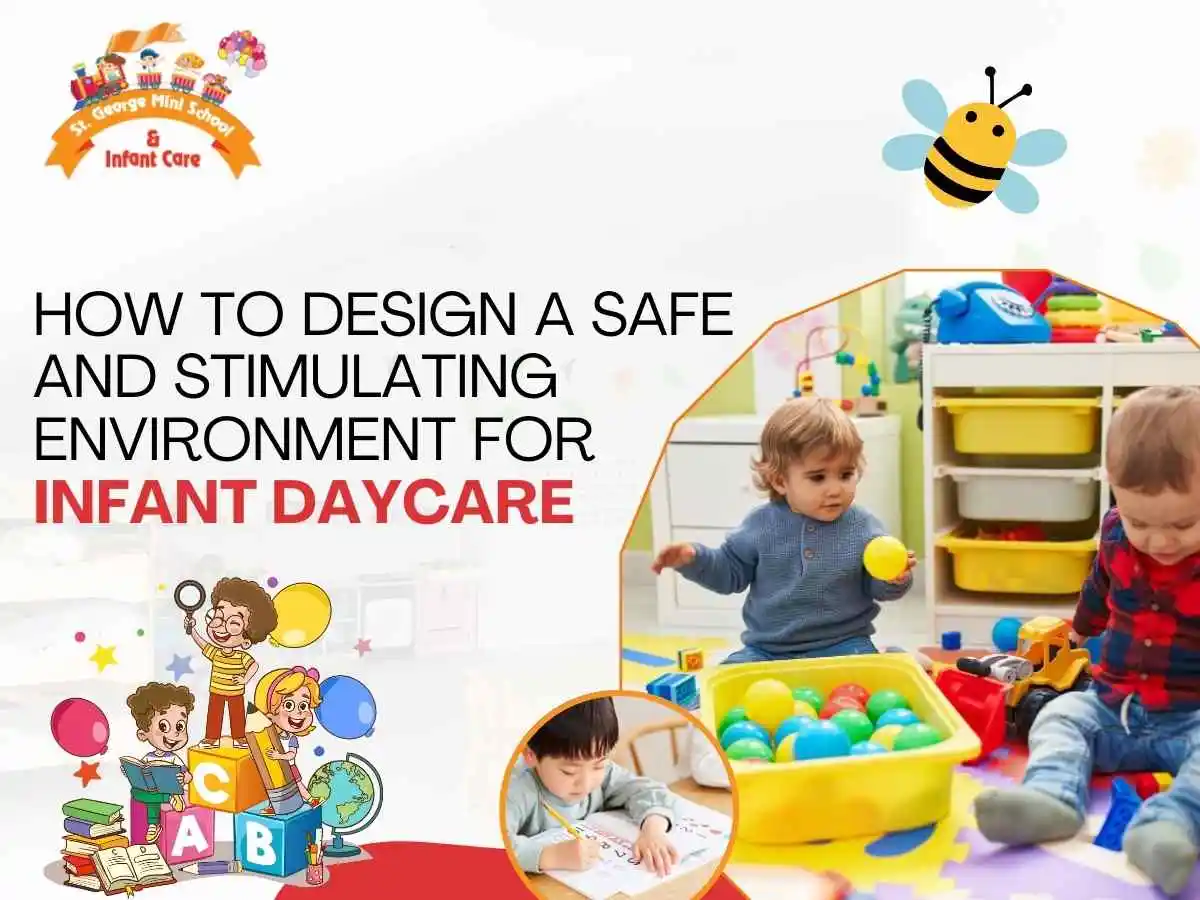33 Mallard Rd: (647) 478-6114
141 Bond Ave: (647) 478-6043
25 Mallard Rd: (647) 812-7795
33 Mallard Rd: (647) 478-6114
141 Bond Ave: (647) 478-6043
25 Mallard Rd: (647) 812-7795
2025-09-22
When parents choose a daycare for their infant,
safety and stimulation are at the top of their concerns. An infant's earliest
experiences shape their brain development, social skills and overall growth.
For operators and educators, designing a safe yet engaging environment is
essential for building trust and delivering high-quality child care.
Whether you are setting a new day care center or
improving existing spaces, the right environment ensures infants are protected
while also being encouraged to explore, learn, and thrive.
1. Prioritize Safety at Every Level
Safety is the foundation of all quality day care
schools. Infants are naturally curious and need spaces free from hazards.
Key safety measures include:
• Securing furniture
to the walls to prevent tipping
• Using non-toxic,
baby-safe cleaning supplies and toys
• Installing safety
gates, outlet covers, and cushioned flooring
• Maintaining strict
sanitation routines for feeding areas and play zones
By creating a safe basis, parents gain peace of
mind knowing their child is in a reliable childcare environment.
2. Create Age-Appropriate Spaces
Infants have unique development requirements that
differ from toddlers or preschoolers. Should provide a high-quality daycare:
• Soft play areas for
crawling and tummy time
• Safe floor mats to
support early mobility
• Quiet, cozy corners
for rest and naps
• Interactive zones
with sensory toys and visual stimulation
Well-designed daycare centers organize their rooms
to encourage both comfort and exploration, making it easy for infants to
transition smoothly between activities.
3. Stimulate Learning Through Play
Even at an early age, play is learning. Infants are
introduced in a stimulating day care environment:
• Textures, colours,
and shapes for sensory development
• Age-appropriate toys
that promote hand-eye coordination
• Gentle music and
storytelling for auditory growth
• Responsive
interactions with caregivers to foster language development
This balance between structure and exploration now
allows infants to achieve a developmental milestone and enjoy the early stages
of discovery.
4. Nurture Emotional and Social Growth
Infant day care is not just about physical care -
it's about building trust and early bonds. Caregivers play a vital role in
emotional growth by:
• Offering consistent,
loving attention
• Responding quickly
to cues like crying or smiling
• Encouraging early
socialization through group interactions
In a quality day care center, the infant begins to
make safe connections that put stages of healthy social development later in
life.
5. Incorporate Nature and Movement
Whenever possible, safe outdoor spaces should be
part of infant child care design. Fresh air, stroller walks, and supervised
outdoor play help strengthen motor skills while introducing infants to the
natural world. If outdoor access is limited, daycares can incorporate natural
light, indoor plants, and open play areas for movement.
Final Thoughts
Designing a safe and stimulating environment for
infants is one of the most important responsibilities for day care. Parents
trust that a well-structured daycare will protect their children while
encouraging growth in every area—physical, emotional, social, and cognitive.
For operators, investments in thoughtful design not
only create credibility but also ensure that infants get the best start in
life. A truly successful Day Care in North York creates a
space where infants are safe, nurtured, and inspired to explore the world
around them.
Featured Blogs
 28/03/22
28/03/22
Which Is The Best Age To Start Chil...
Daycare North York Infant Daycare North York Infant Daycare North day care center north york preschool programs in North York daycare north york Daycare Toddlers North York preschool programs North York Preschool Programs North York infant daycare north york Subsidized child care north york Day Care Toddlers North York child care north york Before and After School Care North York Before and After Child Care North York Day Care North York Preschool North York Child care in North York Day Care Center North York daycare toddlers north york Before and After school care North York Child care North York preschool programs north york Day Care Schools North York day care centre in North York day care centre preschool north york before and after school care north york before and after school before and after school North York daycare toddlers in North York daycare



